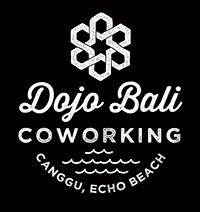For anyone complaining about the recent development of Bali, its vast amount of tourists and little room for real adventure, we have discovered a beautiful, much less developed, but way wilder island quite close to the east side of Bali: Sumbawa.
Home to the volcano, that killed 71,000 people and triggered a period of global cooling known as the “Year Without a Summer” in 1816, Sumbawa is a real unknown treasure.
The eruption destroyed most of volcano Tambora’s summit, reducing its height by about a third and leaving a six kilometer-wide opening of the crater. Regardless, Tambora remains the highest point on the island, which is 3x the size of Bali. Apart for this volcanic landscape, the island is traditionally known as the source of sappanwood, honey and sandalwood. Its savanna-like climate (unlike Bali’s wet conditions) and vast grasslands are used to breed horses, cattle and goat (trust me – there are more goat then human on Sumbawa).
Elaborately contorted and sprawling into the sea, Sumbawa offers an enormous diversity of landscapes: sheltered paradise beaches, volcanic ridges, terraced rice fields, world class surf breaks and dry meadows. Even though, being only 12 hours drive and ferry ride from the coast of Bali, it’s a very different sort of place: far less developed, mostly very dry, much poorer, extremely conservative and homogeneously Islamic.
While farming is the primary means of support of Sumbawa people, we believe that their tourism potential in light of their cultural wealth and beautiful natural environment could be way higher. Therefore – and to motivate you all to visit this pearl – here are our top highlights.
Hitting the Road on a Motorbike
Even though Sumbawa has 2 regional airports, Bima in the east and Sumbawa Besar in the west, no airline is flying here directly from Bali. Not just getting here, but also getting around is quite challenging if you don’t have your own transportation. Surprisingly, Sumbawa possesses a well maintained highway that crosses through the country from the west side to the east side, but busses and taxis are nowhere to be found. That means, it’s much easier to get your own bike and take a ferry. But be aware: Because of many records of stolen bikes from Bali, the ferry officers might check for original papers, in some cases rented bikes are not allowed on the ferry. So best to get your own bike or at least to take the original papers with you.
From Bali’s port Padang Bai you can take the hourly ferry (attention: these are “Indonesian” timings) to Lombok, which costs little money and takes about 6 hours. Upon arrival in Lombok, cross the island, which takes around 2 hours depending on traffic, to the east port of Lombok called Labuhan. From there get a ticket for the ferry to Sumbawa which takes around 3 hours and should leave every couple of hours. And there you are – welcome to paradise!
Now coming to the real pleasure: hitting the road. With very little traffic, well maintained streets and not many junctions, it’s quite easy to enjoy the ride (just be aware of goats, goats and goats). One of the prettiest roads we took was in the north east side of the island – the ocean road between Sape and Bima. Driving alongside the beach, with breathtaking views on volcano Sangeang. Also the ride on the west coast along some of the world’s best surf breaks is fantastic. Make sure to stop for some local lunch or snacks on the way and have a swim on untapped paradise beaches.
And one other tip: Make sure to plan your route wisely, as there is hardly any accommodation on the island. While travelling we expected some local guest houses, but that was not the case. In cities like Bima, Dompu, Sumbawa Besar and others you may find city hotels (which are quite expensive compared to the price level of the island), or hostels but only in the surfer spots! Which brings me to the next point…
World Surf Class Breaks
In our 10 days trip through Sumbawa we have met hardly any tourists, the only ones you can find are (mostly) Ozzie surfers that are hunting some of the best waves in the world.
In the 1980’s the more adventurous surfers left Bali and took off to explore undiscovered waves in Sumbawa. Meanwhile, also the expat Australians working in the gold mines on the island started to settle on the magnificent coastline of Sumbawa to find the best, most consistent surf breaks. Still today, on any given day you’ll find perfect surf conditions, clear-water and very little tourists.
The best surf spots can be found on the west coast between Kertasari and Tropical Beach and on the eastern side of the island, which is called Lakey point. For anyone who’s not that much into surf, the western beaches offer of white sandy beaches and transparent turquoise water, where even snorkeling or kayaking is possible and the surrounding offers some waterfalls or rice paddy walks (Check out the waterfall: Air terjun Semporon Tangkel which is near Maluk).

On our trip we’ve stayed at Whales & Waves a real insider tip, which also offers cheap backpacker accommodation next to their expensive villas. Further south you can find beachfront accommodation for little money e.g. Yoyo’s Hotel, Santai Bungalows or Supersuck Hotel.
The Princess Diana Waterfalls
The largely undeveloped Moyo Island off the north west coast of Sumbawa promises some sandy beaches, a magnificent waterfall and some terrific snorkeling.
The gorgeous, multi-terrace limestone waterfall Mata Jitu leapt to international fame when Princess Diana visited the waterfall in 1993. Normally, a sight like that, would attract tons of tourists, but during our visit we had the waterfall and its several baths just for us. The trekking through the jungle takes around 2 hours, so make sure to take water and a bather! Our conclusion: if there was ever made a waterfall for a princess it would be Mata Jitu. 
Photo Credit: Ohelterskelter
Off the beaches and under the surrounding waters, you’ll find some marvelous snorkelling. The crystal-clear ocean offers great visibility to explore plenty of live coral and some interesting reef fish.
Even though the island has a few villages, getting here is quite a hassle. You have the choice to charter a private boat for quite a substantial amount of money (tip: try to share with some other tourists), take the cheap public ferry – times unknown or check some of the surrounding hotels, which might offer a day trip (check: Kencana Hotel outside of Sumbawa Besar).
Get close with the locals
But next to all the gorgeous landscape and adventure, what is truly refreshing is the friendliness of the locals.
They will wave, shout “Hello Mister”, ask for heaps of selfies, kids will be running behind your bike and locals will be climbing on trees to offer you a free coconut. Make sure to have ready a few words of Bahasa – they were so happy when we babbled a few broken sentences.

So, if you are up to explore the real Indonesia, hop on your bike and off you go! We promise: A trip full of memories, local encounters and breathtaking landscape.
PS: If you have reached the furtherst east side of the island, make sure to extend your holiday for a few more days to explore Komodo National Park, which is part of Flores island. Stay tuned – Komodo National Park Blog Post will be out soon!
Header Photo Credit: Robert Hoppe
Written by: Lisa Johannsen





